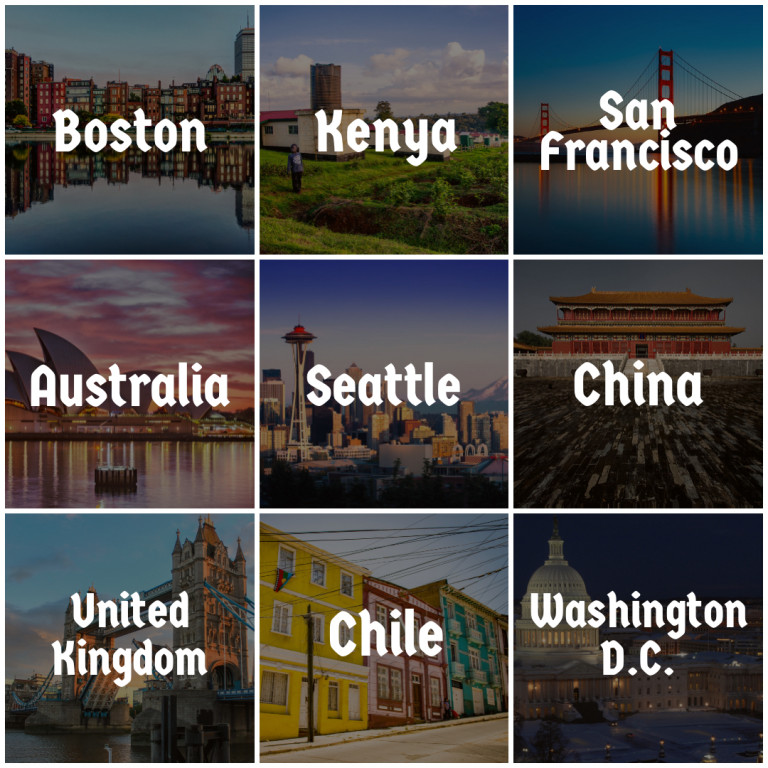
(NASA)

(NASA)
“We’re doomed anyway.”
“It’s too late.”
“The change is too small to work. We need bigger corporations in it to work.”
These are the words often heard by environmentalists when arguing for more environmental protection. And although leaning on a pessimistic attitude, these feeling are not entirely wrong. It is easy to see our forests crumbling to the logging, our oceans filling up with take-out boxes, and the average global temperature showing no signs of decreasing. And with that, it is hard to notice how influential the past decades of big and small strides toward environmental protection have been. Without recognizing how fruitful these efforts are, it becomes even harder to make short-term sacrifices for long-term gains.
Below are some achievements that show we still have power to make a positive impact for Earth.

The main cause for ozone depletion was due to long-lived man-made chemicals called chlorofluorocarbons (CFCs). The contained chlorine released by the Sun’s energy then go on to destroy the ozone. Since discovering CFCs were responsible, the Montreal Protocol banned its production in 1987. Today, we have direct proof that the recorded ozone depletion is declining correspondingly.

Washington, D.C.; San Francisco; Seattle; Boston; Kenya; Chile; the United Kingdom; Australia; and China are just some of the cities and countries that have contributed to decreasing the amount of plastic waste. Policies established to entirely ban, regulate, or tax single-use plastic bags successfully decreased this type of waste. In 2012, San Francisco not only implemented the ban on single-use plastic bags but also a 10 cent charge on compliant alternative checkout bags. This legislation spearheaded a culture of reusable grocery bags that has become the norm today. And some other areas, like France, even expanded the ban to plastic plates and cutlery.

Coral reefs are commonly known as the “rainforests of the sea.” They provide nutrients and shelter for 25% of marine life, and they act as a natural barrier to protect coastal communities from waves, storms, and floods. Due to ocean acidification, a fifth of the world’s reefs have died. One way scientists are fighting back against the pollution is by seeding reefs with coral offspring to help restore and rehabilitate this essential ecosystem.

You can go green at home, and while you’re away from home with two growing areas of technology: solar and electric vehicles, or EVs. While harvesting solar power has been around for more than a century, it was only until President Bush signed the Energy Policy Act of 2005 due to high gasoline costs that solar panels became more commercially accessible. This legislation raised the commercial investment tax credit by 30%. This generator for clean renewable power not only limits greenhouse gas emissions and helps shrink your carbon footprint, but it also can save you money long-term. The switch has been supported and encouraged through government subsidies. In 1975, solar panels costed about $100 per watt. Today, our national average has dropped to $3.05 per watt. As for EVs, the number of electric cars on the road is increasing and climate change-contributing emissions are decreasing. The environmental benefits become even greater when these cars are charged using renewable energy, such as solar.

Here are three examples:
Walk score was founded in 2007 hoping to promote walkable neighborhoods and a shift away from necessities of a car to go about day-to-day living.
Biking has always been a good green alternative to burning fuel in order to zip around town. However, two-wheeled transportation is surging as a result of cities providing more accommodating infrastructure.
Cities all over the world are networking together through the C40 Cities Climate Leadership Group to see and advise about solutions to climate challenges. There are currently more than 90 cities whose city practitioners learn from each other about implementing sustainable actions.

The Endangered Species Act recognized that diversity in our natural world is important for the continuance and survival of our ecosystems. With the driven effort of conservationists in combination with the policy, these plants and animals are a part of a longer list of species that have been taken off the endangered list in the past few years: Whooping crane, Eureka Valley Evening Primrose, Snow Leopard, Hidden Lake Bluecurl flower, Yellowstone grizzly bear, and Lesser Long-nosed bat.